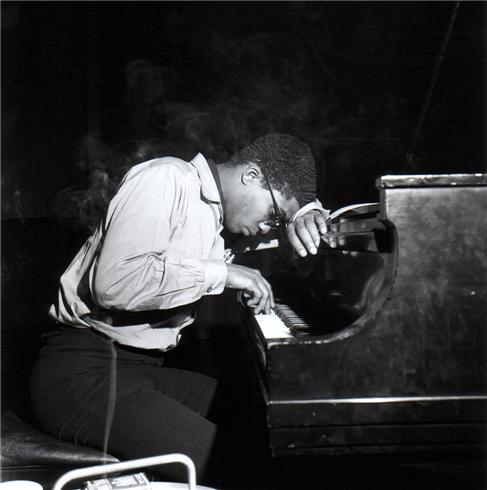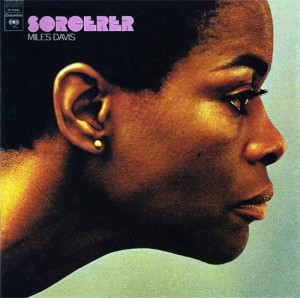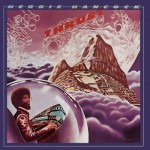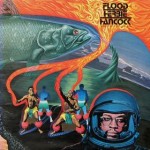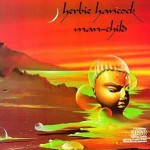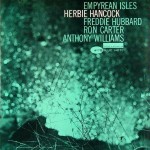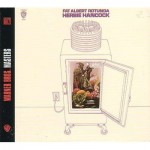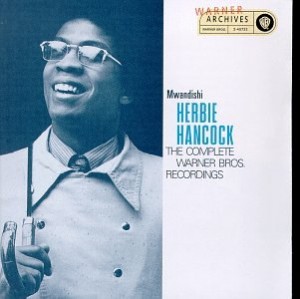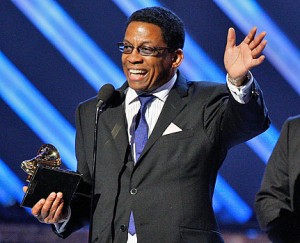Everyone knows that Herbie Hancock is one of the coolest men on the planet, and has been for almost half a century. Anyone who doesn’t know this doesn’t know much; all we can offer them are condolences. Only Miles Davis, with whom Hancock worked for several crucial years (in both mens’ lives) during the mid-’60s, can possibly be invoked in any discussion of popular musicians who consistently shaped, then challenged the vanguard over a substantial period of time. These artists not only made new music but changed music on at least a handful of occasions.
Most folks know, and love, Hancock from what was likely their first association with him: the song (and more significantly, the video) “Rockit”, which was prominent in the MTV rotation circa 1983. The import of this one song is impossible to overstate: it not only spotlighted black men on the then-lilywhite music video channel, it spotlighted a jazz band. On top of that, it served as a mainstream introduction to scratching and turntable pyrotechnics. To say the earth was no longer flat, sonically speaking, after “Rockit” is only hinting at its influence.
But before the ’80s, Hancock made music that remains fresh and vital. Just looking at some of the album covers from the ’70s era (below) should hearten the faithful and intimidate the weak. Street cred? Can you say soundtrack to Death Wish? That not impressive enough? How about Antonioni’s Blow-Up?
Of course, Herbie arguably made his most enduring music in the ’60s. In 1963 Miles Davis asked Hancock (along with bassist Ron Carter, tenor sax player Wayne Shorter and seventeen year old wunderkind drummer Tony Williams) to join his new quintet. To put it as simply as possible, this is the best band ever assembled in jazz history; only John Coltrane’s Classic Quartet comes close. And while many geniuses, from Charlie Parker to Ornette Coleman, led top-tier collectives, there is really no touching this ensemble. Perhaps nowhere is the uncanny dynamic of the group displayed in fuller effect than on Wayne Shorter’s “Footprints”; there are great live versions here and here but the definitive version is the one that appeared on Miles Smiles (from 1967):
Incidentally, at the same time he was making history with Miles Davis, he was recording a string of albums under his own name that, taken together, would easily put him on the very short list of all-time greats.
“Speak Like A Child”, from 1968:
Taking the electronic mantle from Miles (after the shot-heard-round-the-world of Bitches Brew, which remains controversial 40 years on), Hancock reinvented his own language with works that were equal parts jazz, fusion and what is now called “world music”: in 1973 he dropped Head Hunters and it became an instant classic. Here is Hancock and his band, performing “Butterfly”, from 1974:
Easing into the ’80s, there is of course, this, the aforementioned “Rockit” (Herbie could even make the early ’80s seem cool; think about how indescribably lame virtually all of the videos from this era are, and check out how hip and vaguely unsettling this one still seems):
Herbie had nothing left to prove at this point. But he had more to give. A lot more. In addition to being a genius, by all accounts Hancock has always been exceedingly modest and softspoken; a gentleman of the old school. Check out this slice of heaven, Herbie keeping it real with the kids on Sesame Street:
And here he is, fresh from winning a Grammy (for 2008’s Album of the Year River: The Joni Letters), playing “Watermelon Man” for Elvis Costello on Sundance Channel’s Spectacle (the original is here and the remake from his ’70s classic Headhunters is here).
It’s all gravy at this juncture. It has been since 1973, if not 1969. Hancock has been the baddest, nicest and coolest cat on the scene for five decades; what could he possibly have in store for us next?
